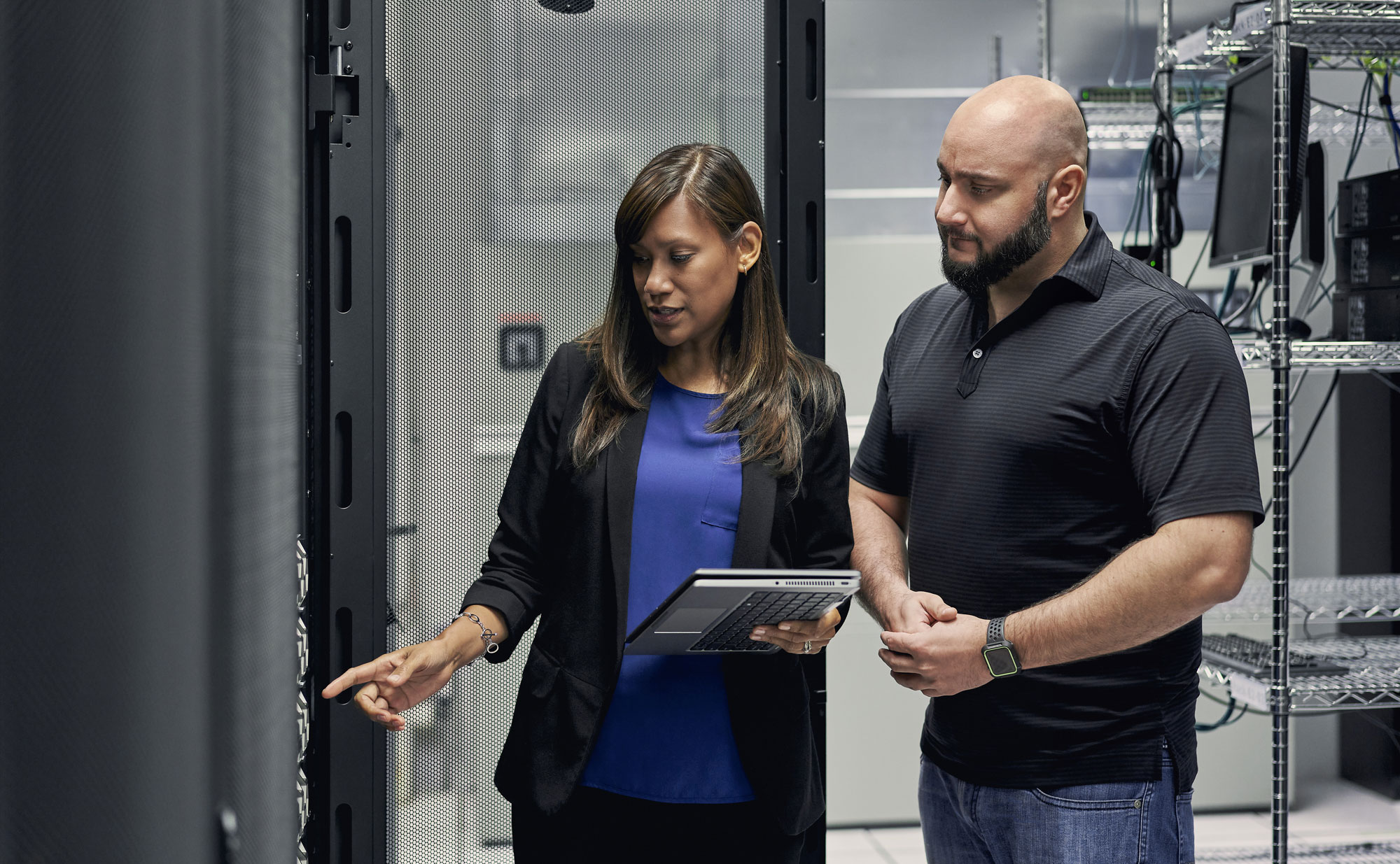Checklist for IT: How to choose a physical security vendor
Use this checklist to evaluate physical security vendors and ensure alignment with business needs, technical compatibility, cybersecurity, compliance, and reliability.

Your organization needs strong security that aligns with your information technology (IT) infrastructure to keep people, data, and assets safe. Here’s a checklist you can use when analyzing a prospective physical security vendor.
CHECKLIST
Business alignment
✓ Strategic fit: A unified platform with video surveillance, access control, automatic license plate recognition (ALPR), communications, forensics, analytics, and more ensures stronger alignment with organizational objectives and IT strategies.
✓ Stakeholder needs: The solution addresses the requirements of security teams, compliance officers, and IT departments by providing centralized management and real-time monitoring, fostering collaboration and informed decision-making.
✓ Scalability: Designed to support both on-premises and cloud deployments, this solution can scale seamlessly as organizational needs evolve and accommodate growth without compromising performance.
Technical compatibility
✓ Integration: Open architecture for smooth integration with existing systems, including Active Directory and various cloud platforms, ensuring interoperability and future-proofing investments.
✓ Infrastructure requirements: The flexibility of solutions supports both existing infrastructure and new deployments, offering on-premises, cloud, or hybrid models without necessitating proprietary hardware.
✓ Interoperability: A robust API framework ensures seamless integration with third-party tools and emerging technologies, allowing your organization to customize solutions to your specific needs.
Security and compliance
✓ Data protection: Employs end-to-end encryption and secure data transfer practices to safeguard data integrity and privacy, mitigating potential risks to networks and data.
✓ Compliance: Adherence to international laws and standards, including GDPR, NIS2, ISO 27001, CCPA/CPRA, EU AI Act, and more, ensures that vendor solutions meet stringent security and data protection requirements.
✓ Authorization and authentication: Customized user access rights with role-based permissions and multi-factor authentication reduce the risk of unauthorized access to systems and data, aligning with cybersecurity best practices.
✓ Audit and logging: Comprehensive audit trails and activity logging capabilities facilitate monitoring, reporting, and compliance, providing transparency and accountability.
✓ Cybersecurity: Completed the System and Organizational Controls (SOC 2) Type II audit for its portfolio of cloud products and the Information Security Management System that governs them (ISO/IEC 27017 and ISO/IEC 27001 – see complete list of cybersecurity certifications here.)

Reliability and performance
✓ Uptime and SLAs: Vendor offers high-availability configurations with guaranteed uptime through service level agreements (SLAs), ensuring uninterrupted security operations.
✓ Failover and redundancy: Automated failover mechanisms and disaster recovery strategies are integral to the physical security platform, helping to protect data and maintain operational continuity during unforeseen events.
✓ Load capacity: The platform's ability to scale horizontally and vertically ensures it can handle large deployments without performance degradation, adapting to organizational growth.
Cost and ROI analysis
✓ Total cost of ownership (TCO): Transparent pricing structures encompass licensing, implementation, and maintenance costs, with long-term savings achieved through unified management and reduced operational expenses.
✓ Return on investment (ROI): The vendor’s solutions delivers measurable benefits by improving operational efficiency and enhancing risk mitigation through intelligent analytics and automation.
✓ Licensing model: Flexible licensing options, including subscription-based and perpetual licenses, allows your organization to choose models that align with your financial strategies.
Vendor reputation and evaluation
✓ Reputation and stability: The vendor is financially stable and a trusted global provider of physical security solutions.
✓ Support and maintenance: Offers 24/7 technical assistance and a dedicated customer portal to ensure you receive robust support services tailored to your needs.
✓ Roadmap: Commitment to continuous improvement is reflected in regular software updates, incorporating new features that address evolving security and cybersecurity challenges.
✓ References and case studies: Numerous case studies highlight successful implementations across various industries, showcasing the vendor’s ability to meet diverse security needs.

Implementation and user adoption
✓ Deployment complexity: Vendor collaborates closely with clients to develop detailed implementation plans, ensuring efficient deployment while minimizing operational disruptions.
✓ Training and documentation: Comprehensive onboarding programs, including hands-on training sessions and access to online resources, equip customers to easily manage and operate their systems effectively.
✓ Change management: Emphasizes a collaborative approach to change management, ensuring smooth transitions and successful adoption of new security solutions.
Decision criteria
✓ Risk assessment: Proactive vulnerability management and incident response protocols are integral to the vendor’s approach, identifying and mitigating potential risks to networks and data.
✓ Pilot testing: Vendor offers pilot programs to validate solution performance and fit before full-scale rollout, allowing organizations to assess the system within their specific environments.
Checklist
